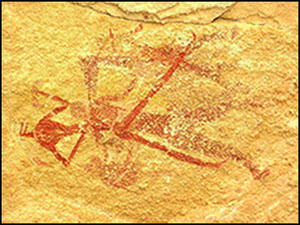Article contents
Climate, styles and archaeology: an integral approach towards an absolute chronology of the rock art in the Libyan Desert (Eastern Sahara)
Published online by Cambridge University Press: 20 January 2017
Abstract

Archaeology and palaeoclimatology have provided a strong chronological framework for the Holocene settlement of the central Libyan Desert (Eastern Sahara), but this does not integrate the abundant rock art that is present. Using an interdisciplinary approach, this article amalgamates primary environmental and climatic evidence, 14C dates, stratigraphy and other chronologically relevant archaeological indicators with a systematic analysis of the relative sequence of local rock art styles derived from superimpositions and weathering. Evidence from each discipline corroborates that of the others, enabling the establishment of an absolute chronological framework for the Holocene rock art in the region.
- Type
- Research
- Information
- Copyright
- Copyright © Antiquity Publications Ltd, 2017
References
- 9
- Cited by




